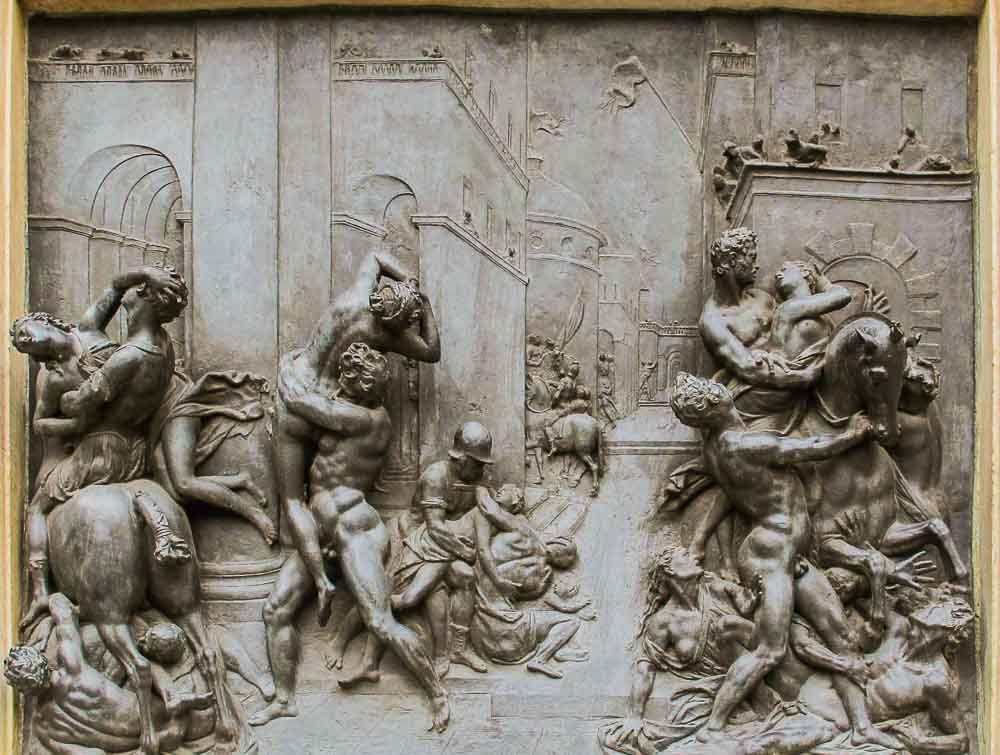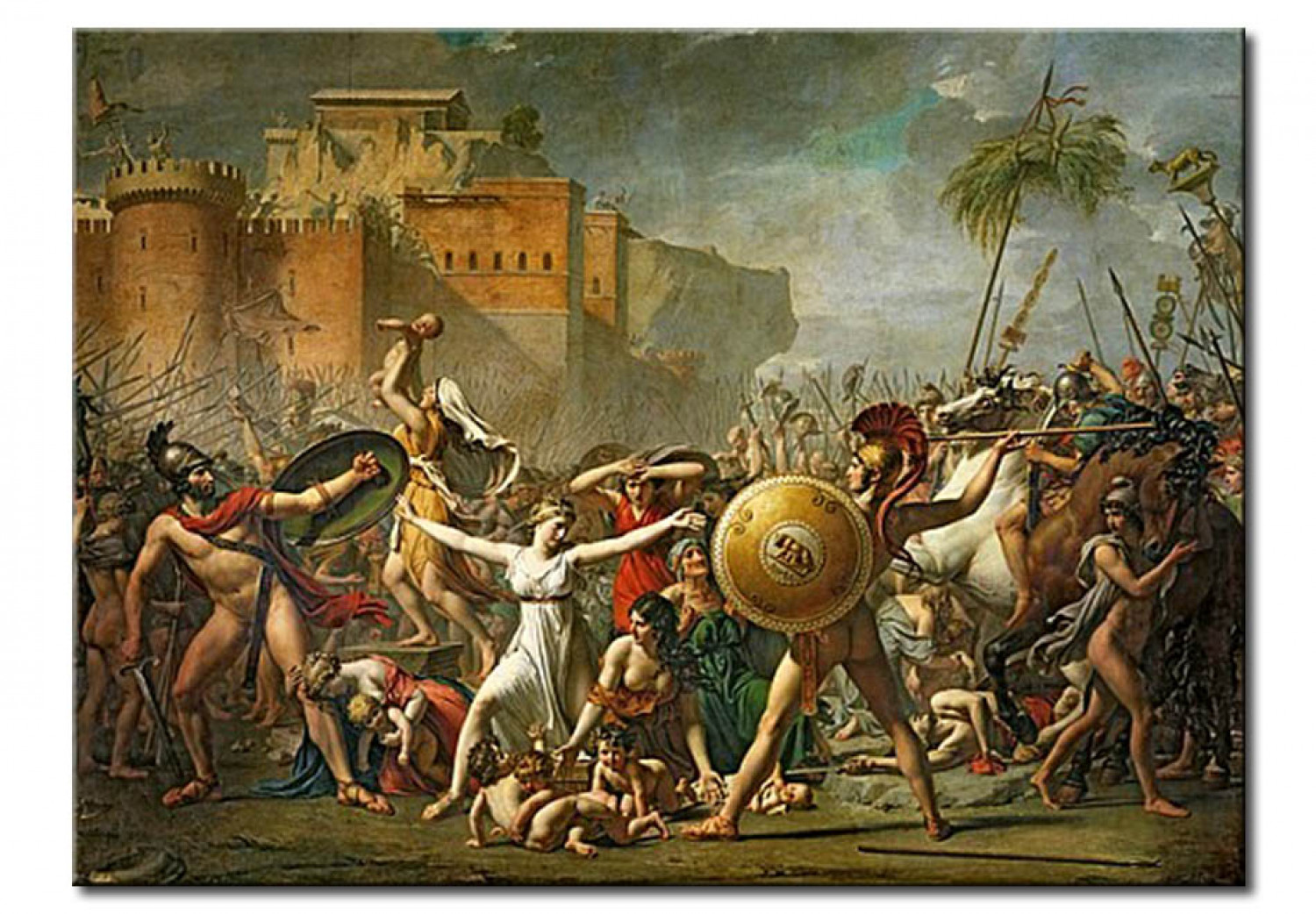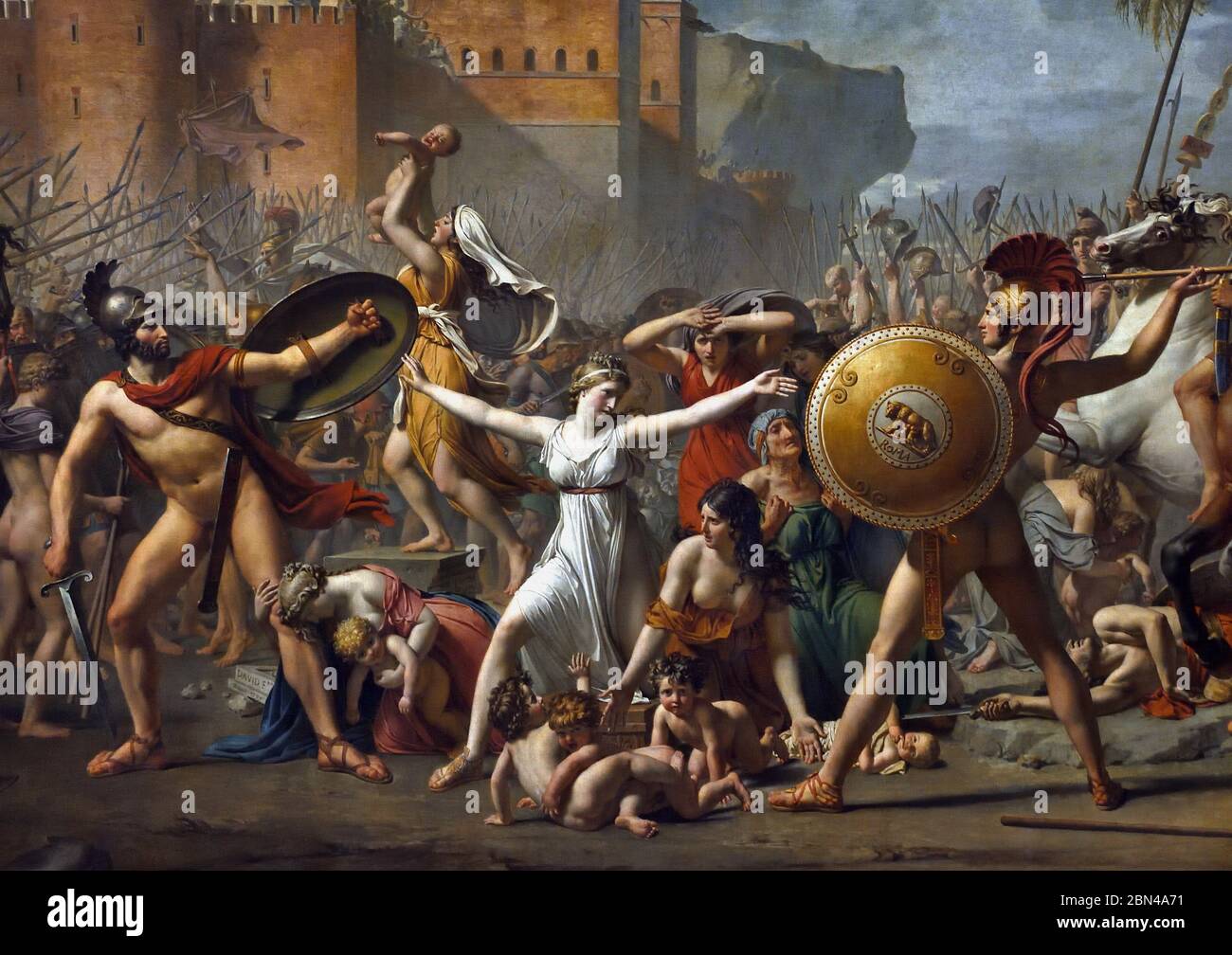
The Intervention of the Sabine Women 1799 painting by JacquesLouis
Romulus oversees the abduction of the Sabine women (Public domain) According to Plutarch, Romulus' signal to the men of Rome was to be whenever he rose up to gather up his cloak and throw it over his body. When this signal was seen, the Romans were to fall on the Sabine maidens and carry them away.

David, The Intervention of the Sabine Women with detail of… Flickr
By Ḏḥwty, Contributing Writer, Ancient Origins The Rape of the Sabine Women by Pietro da Cortona, 1627-29 ( public domain ) According to tradition, the city of Rome was founded in the 8 th century B.C. by Romulus. The Roman historian Livy wrote that the city of Rome grew strong quickly, and was able to

Title: The Abduction of the Sabine Women Artist: Nicolas Poussin (French, Les Andelys 1594-1665 Rome) Date: probably 1633-34 Medium: Oil on canvas Dimensions: 60 7/8 x 82 5/8 in. (154.6 x 209.9 cm) Classification: Paintings Credit Line: Harris Brisbane Dick Fund, 1946 Accession Number: 46.160 Learn more about this artwork

Of the Sabine women editorial photography. Image of curiatii 55117737
The Intervention of the Sabine Women is a 1799 painting by the French painter Jacques-Louis David, showing a legendary episode following the abduction of the Sabine women by the founding generation of Rome . Work on the painting commenced in 1796, after his estranged wife visited him in jail.

curs4a2010 the rape of the sabine women
Picasso's series The Rape of the Sabines was executed at the height of the Cuban Missile Crisis in the autumn of 1962. The works capture the showdown between East and West and the very real threat of the annihilation of humanity in a Third World War and nuclear Armageddon.

The Abduction Of The Sabine Women, Painted By Nicolas Poussin (c. 1594
The Rape of the Sabine Women ( Latin: Sabinae raptae Classical Latin: [saˈbiː.nae̯ ˈrap.t̪ae̯] ), also known as the Abduction of the Sabine Women or the Kidnapping of the Sabine Women, was an incident in the legendary history of Rome in which the men of Rome committed a mass abduction of young women from the other cities in the region.

Sabine Women The Sabine Women Acrylic Print By Jacques Louis David
The Rape of the Sabine Women | Photo Credits: Daily Art Magazine The Sabine people lived in the central Apennine Mountains of ancient Italy. According to scholars and historians, the sad event.

The Sabine Women
The Intervention of the Sabine Women. Jacques-Louis David, 1795 - 1799. 385 cm 522 cm. The Intervention of the Sabine Women is a Neoclassical Oil on Canvas Painting created by Jacques-Louis David from 1795 to 1799. It lives at the Musée du Louvre in Paris. The image is in the Public Domain, and tagged Greek and Roman Mythology and Political.

Sabine Women The Sabine Women Acrylic Print By Jacques Louis David
The Rape of the Sabine Women is a masterpiece by Giambologna, the official sculptor of the Medici family, who commissioned him this imposing statue that still stands in the Loggia della Signoria (or Loggia dei Lanzi), in Piazza della Signoria.. The sculpture represents a young man who raises a girl in his arms, but during his act the man is blocked by an elder who is between his legs.

The Rape of the Sabine Women, by Pablo Picasso
Jacques-Louis David, The Intervention of the Sabine Women. Jacques-Louis David, The Intervention of the Sabine Women. by Dr. Beth Harris and Dr. Steven Zucker. Jacques-Louis David, The Intervention of the Sabine Women, 1799, oil on canvas, 12'8″ x 17'3/4″ / 3.85 x 5.22 m (Musée du Louvre, Paris)

The Sabine Women • Wander Virtually
Abduction of a Sabine Woman (or The Rape of the Sabine) is a large and complex marble statue by the Flemish sculptor and architect Giambologna (Johannes of Boulogne). It was completed between 1579 and 1583 [1] for Cosimo I de' Medici. [2] Giambologna achieved widespread fame in his lifetime, and this work is widely considered his masterpiece. [3]

Reproduction Painting The Sabine Women JacquesLouis David
Giambologna's Abduction of a Sabine Woman is one of the most recognized works of sixteenth-century Italian art by one of the least well-known artists of the period. And while Giambologna may not be a household name like Michelangelo, his influence on late sixteenth- and early seventeenth- century European art was extensive and long lasting.

The Rape of the Sabine Women by UNKNOWN MASTER, French
The Intervention of the Sabine Women is a 1799 painting by the French painter Jacques-Louis David, showing a legendary episode following the abduction of the Sabine women by the founding generation of Rome. David began planning the work while he was imprisoned in the Luxembourg Palace in 1795.

The Rape of the Sabine Women
The Sabines ( US: / ˈseɪbaɪnz /, SAY-bynes, UK: / ˈsæbaɪnz /, SAB-eyens; [1] Latin: Sabini; Italian: Sabini; Greek: Σαβίνοι Sabinoi, (all exonyms) were an Italic people who lived in the central Apennine Mountains (see Sabina) of the ancient Italian Peninsula, also inhabiting Latium north of the Anio before the founding of Rome .

Rubens, Peter Paul & The Rape of the Sabine Women & Wall Mural
The picture represents the moment in the story when, a few years after their abduction, the Sabine women, now contented wives and mothers, halt a battle between their Roman husbands and the Sabine men who have come on an unwanted rescue mission. In… Home Visual Arts Painting Painters Arts & Culture Jacques-Louis David French painter

Sabine Women The Sabine Women Acrylic Print By Jacques Louis David
Peter Paul Rubens, The Rape of the Sabine Women, probably 1635-40. Read about this painting, learn the key facts and zoom in to discover more.